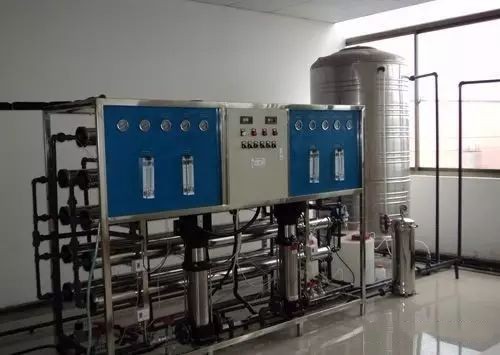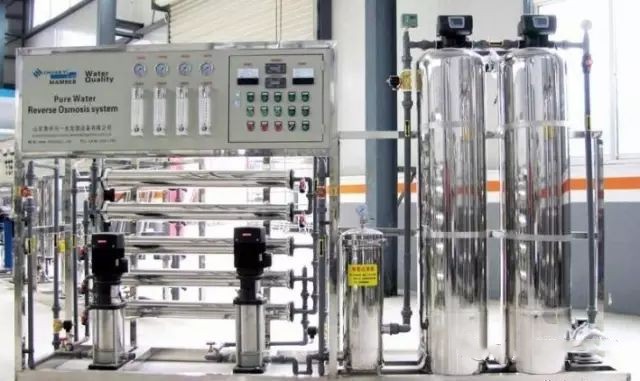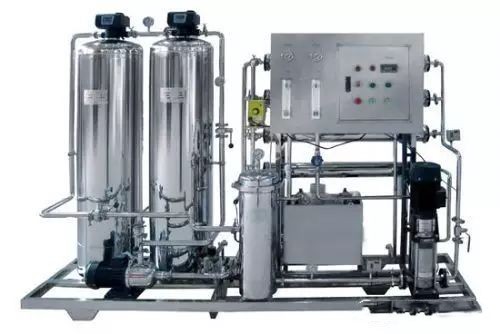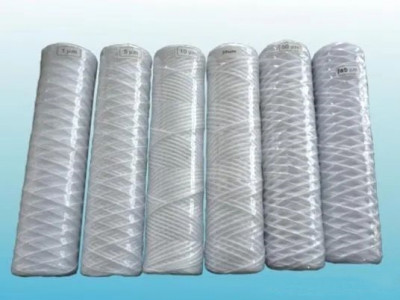The placement of industrial reverse osmosis system requires high environmental requirements, first of all, the location of the common desktop reverse osmosis system can be placed on a flat bench, the entire system should be left near enough space to connect the water pipe, power supply and replacement supplies. The machine should be installed near the water source, power supply and sink location. The requirements for the water environment is to tap water as the water source system, the water pressure required: 1.5-3.5Kg/CM3. The diameter of the incoming water pipe should not be less than 4 points. Need to consider the hardness of the incoming water, such as high hardness, the incoming water needs to be softened first.
March 8, 2023
industrial reverse osmosis system should be standardized operation, whether in the choice of environment, or failure to adjust the time should be in accordance with the corresponding process operation, so that there will be no unnecessary losses. industrial reverse osmosis system to purified water as the source of water system, the TDS value of the incoming water needs to be less than 20PPM. the power requirements for industrial reverse osmosis system is the amount of water produced in 250L-50m3/ h of all systems, the required power supply: 220V/380v. These are the requirements necessary for the environment before the placement of industrial reverse osmosis system .
industrial reverse osmosis system failure check in the press pure water key or ultra-pure water key to take no water indicates that the water level in the storage tank has been lower than the low level switch. At this time, please wait patiently for the equipment to make water, when the water level in the tank exceeds the low level switch, then you can take water. This indicates that the water storage tank level switch and ultra-pure water machine level signal line may not be in good contact. Please check and improve. industrial reverse osmosis system in the daily occurrence of some minor faults to be reasonably checked, first check the process of industrial reverse osmosis system can not be turned on, in order to check the process is to check whether the power plug is plugged in, whether the power supply has power. Check whether the power switch connection cable is off, reconnect the power cord. The system shows no water and emits an alarm sound indicating that the incoming water pressure is lower than the set value. Please check whether the water source is open, whether there is water in the system, or whether the tap water pressure is lower than 0.1MPa. if so, please improve the water inlet situation to the appropriate water pressure. If the water inlet is normal, check whether the pre-treatment cartridge is blocked, and if it is, clean or replace the pre-treatment cartridge.

Analysis of industrial reverse osmosis system can not start and its solution
After the field test, it was found that the industrial reverse osmosis system could not start because the pressure protection switch on the inlet pipe and the water passage of the pressure protection switch in front of the high-pressure pump were blocked by rust, which could not sense the pressure, and could not output the signal to the PLC control program, resulting in the equipment not starting. The turbidity of the water from the sand filter tank was tested to be no higher than 1.0 NTU, meeting the requirements for entering the security filter, and there was no possibility of the security filter being blocked by solid impurities.
Cut the same size slice from the blocked security filter into dilute hydrochloric acid solution, and after 5 minutes, you can see that the security filter core slice in the hydrochloric acid solution regained its white color. As shown in Figure 3. The pressure protection switch was disassembled and the inlet pipe of the pressure protection switch was found to be clogged with a yellowish-brown substance. After cleaning the line pressure protection switch can normally reflect the water pressure over water. The water quality analysis showed that the iron ion content in the water was as high as 0.5ppm, and a large yellow-brown patch was visible to the naked eye in the removed reverse osmosis membrane, with yellow-brown material accumulating at both ends of the membrane.
Through the industrial reverse osmosis system into the water pipeline investigation, found that the cause of the increase in iron ions is the use of booster pumps. The booster pump was introduced to ensure that the equipment inlet water had sufficient pressure to meet the pressure needs of sand filtration and to ensure that the high-pressure pump had sufficient starting pressure. However, the salt content of the raw water was as high as 1.5g/L. The inappropriate choice of booster pump made the booster pump corrode rapidly, causing a large amount of iron ions to enter the pipeline. The system was designed according to the raw water and no device was installed to handle iron ions, causing the sudden introduction of iron ions to affect the safe operation of the equipment. After stopping the use of the booster pump and cleaning the over-pipe of the pressure protection switch, the system resumed normal operation.
Through the analysis of the failure phenomenon, the cause of the equipment can not start normally and the security filter blockage is the increase of iron ions in the raw water. These iron ions in the original water for the reduced state of ferrous ions, can be dissolved in water. These water adsorbed by the security filter or accumulated in the pipeline of the pressure switch, after the equipment shutdown by the oxygen in the air oxidation, turned into insoluble trivalent iron insoluble in water, resulting in the blockage of the security filter core and pipeline, affecting the normal operation of the equipment

industrial reverse osmosis system failure problem causes.
Through the on-site commissioning, operation and investigation of industrial reverse osmosis system, it is found that most of the failures that occur in the operation of industrial reverse osmosis system are derived from improper protection and improper use. In terms of reverse osmosis system design, theoretically selectable protection measures include pretreatment dosing protection, optimization of pretreatment process, and improvement of monitoring instruments. However, for rural users, there is a problem of lack of professional technical background of users and equipment cost here. Usually the industrial reverse osmosis system used in rural areas is maintained and operated by the village, and most of the equipment users lack professional background to complete the maintenance and management of the equipment well. In this case, equipment with a high degree of automation and simple operation and maintenance will be more convenient for farmers to use.
In order to ensure the stable operation of industrial reverse osmosis system, complete design is the first priority. This requires designers to fully consider the complexity of rural brackish water treatment in the process of designing products and projects, taking into account the details in the water production process, including water quality, scale of water production, equipment operation status, location of use, professional background of users, etc., rather than simply completing the connection of various components. In technology, too automated equipment is not suitable for the current rural market, while the online cleaning device is necessary, while modular design can be considered to facilitate the replacement and maintenance of equipment. For the raw water quality and the possible changes in water quality during the operation of the equipment should be fully understood and equipped with protective measures.

As the degree of equipment automation increases, so does the investment in equipment; and automated equipment has too many monitoring control elements, overly sensitive equipment and high failure rates. These failures are often not caused by the equipment itself, but from the failure of the monitoring equipment, such as the aforementioned clogging of the pressure protection switch. The result is that rural users spend a higher price for highly automated equipment, but instead fail to ensure continuous operation of the equipment.
Detailed Operating Instructions for Automatic Dosing Systems
December 26, 2024
Characteristics and Applications of Precision Filters
December 19, 2024



